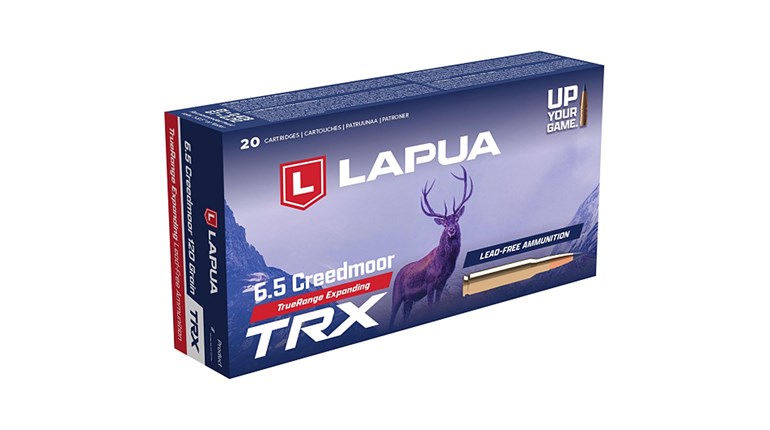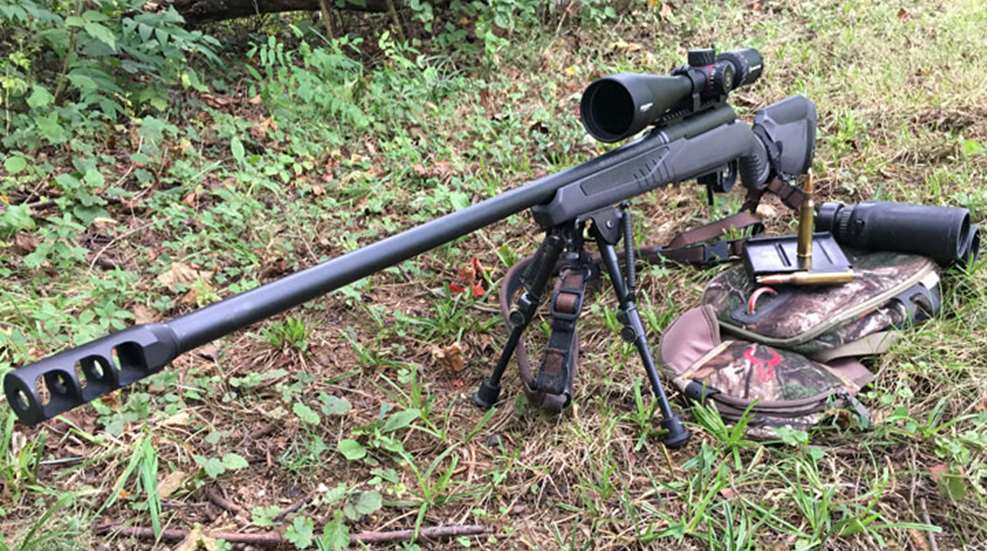
Hunters today are blessed with a seemingly endless selection of capable cartridges to pursue their quarry. While many of them were designed “from zero” for hunting, some of the best options have military origins. Case in point: the stalwart .30-06 Springfield. There’s also the .223 Remington (and the 5.56x45mm NATO), 6.5x55mm Swedish Mauser, .308 Winchester (7.62x51mm NATO), and 7.62x39mm Soviet, to name a few.
That military chamberings nicely pull double-duty for hunting is hardly surprising. Why? The demands are similar; cartridges for shoulder-fired military rifles must be accurate, reliable and semi-portable. So must those for hunting. Additionally, they need to produce the necessary external and terminal ballistics to strike and stop a target. Ditto.
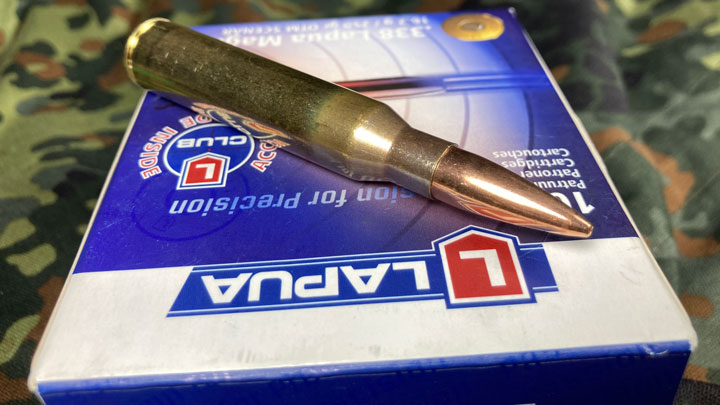
For the astute student of cartridges and their history, an omission from the abovementioned listing likely caught your attention. The absent round, the .338 Lapua Magnum (aka 8.58x71mm), is one of the best military-turned-hunting cartridges extant, though it’s both underutilized and misunderstood.
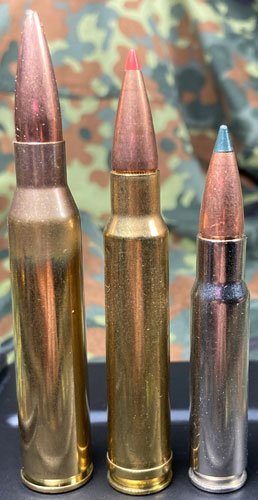
Origins
When the military seeks a new cartridge, it does so to fulfill a need—be it real or perceived. Such was the case with the .338 Lapua Magnum. From the get-go, its intended role was to achieve improved reach (for sniping) and anti-material qualities over the existing .30-caliber options (7.62x51mm NATO and .300 Win. Mag.) in use, while also being more portable than the .50 BMG. As is often the case when studying history, subtle differences between origins stories emerge. The .338 Lapua Magnum isn’t exempt from this.
According to Cartridges of the World, 13th Ed., “In 1983, Research Armament Co. in the U.S. began development of a new, long-range sniper cartridge capable of firing a 250-grain, 0.338-inch diameter bullet to 3000 fps. After preliminary experiments, a .416 Rigby case necked down to .338-inch was selected.” The requestor was reportedly the U.S. Navy.
In a cartridge-centered article within the 2021 Lapua Product Catalog, Janne Pohjoispää wrote, “The .338 Lapua Magnum originates back to the year 1982 when the .338/416 cartridge was developed for the United States military purposes. Officially, the project was to develop a target rifle and cartridge for 1000 yards, but in reality the purpose was more likely to develop a 1,500-meter sniper rifle.”
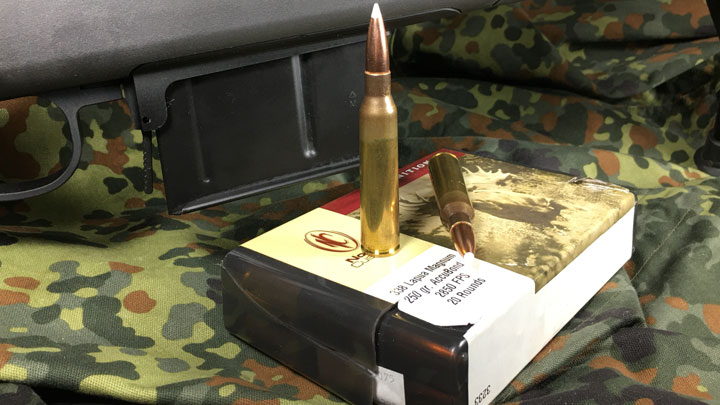
“The search for [a] heavier caliber with better ballistics created a wildcat cartridge that was originally formed from a necked-down .378 Weatherby Magnum case, and finally from the .416 Rigby case,” added Pohjoispää. “The new cartridge was known as the .338/416 or 8.58x71. Lapua finished development of the first bullets and cases for the .338/416 cartridge in 1985.” Even though it won a 1,000-yard competition the subsequent year, it wasn’t adopted.
Without acceptance by the U.S. military, Lapua was left holding the bag. Nothing was lost, though; wisely, the company refined the .338/416 into what is now known as the .338 Lapua Magnum. Cartridge and chamber dimensions were modified, and the beltless case itself was strengthened to withstand higher pressures. Commission internationale permanente pour l'épreuve des armes à feu portatives (CIP) approval came in 1989. Over the subsequent decades, militaries increasingly recognized the cartridge’s capabilities and added it to their inventories.
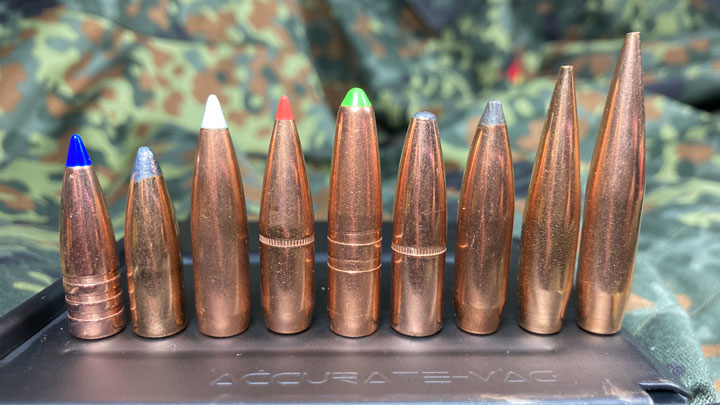
Performance
Original specifications called for a 250-grain bullet propelled to 3000 fps. Even today, most loads fall shy of that goal, but are nonetheless capable of accuracy delivering immense energy at long range. One that does hit the mark is Berger’s 250-grain Elite Hunter. And thanks to the projectile’s prodigious BC (0.685 G1/0.351 G7), when propelled to its published 3005 fps velocity, Berger’s ballistic calculator determined the bullet will strike 33.97 inches low at 500 yards, where it still has 3,072 ft.-lbs. of energy. That’s with a 200-yard. zero. Two-hundred yards further downrange, the numbers are an 87.12-inch drop and 2,486 ft.-lbs, respectively. Even at a half-mile (880 yards) the load delivers more than 2,000 ft.-lbs. of energy. That’s nearly identical to Berger’s .308 Win. 168-grain Classic Hybrid Hunter load at 200 yards. Yeah, it’s potent.
Provided that your .338 Lapua Magnum has a sufficient twist rate to stabilize the svelte, 300-grain bullets boasting extra-high BCs, such as the Berger Elite Hunter, you’ll benefit from their use—especially at-distance. For instance, when Berger’s 300-grain Elite Hunter bullet—with a 0.814 G1/0.417 G7 BC—is propelled to 2725 fps, as it is in Berger’s own ammunition, it’ll impact 40.52 inches low at 500 yards when zeroed at 200. At that distance, it delivers 3,225 ft.-lbs. of energy. At 700 yards the figures are -102.50 inches and 2,686 ft.-lbs. of energy. When the Elite Hunter bullet hits a half mile it will still possess nearly 2,300 ft.-lbs. of energy. So imagine it at close to medium range on large species!
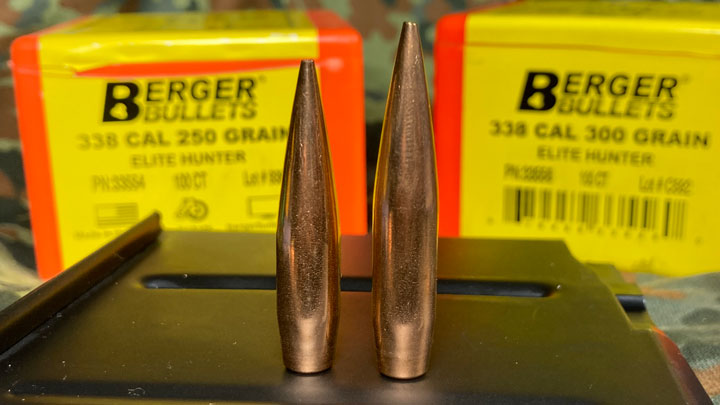
Best of all, the heavy, streamlined .33-caliber bullets are only minimally affected by a 10-mile-per-hour full-value breeze. Using the same information as above, the Berger 250-grain Elite Hunter bullet will drift 11.67 inches at 500 yards, while its 300-grain counterpart only deflects 11.16 inches. That’s impressive.
Outside of the .338-.378 Weatherby Magnum, this level of performance bests all other non-proprietary .338s—including the newer .338 Remington Ultra Magnum (RUM). Given the cartridge’s impressive external ballistics, it’s easy to see why it’s a top choice for hunting elk, moose and other extra-large species in areas where a long shot is likely.
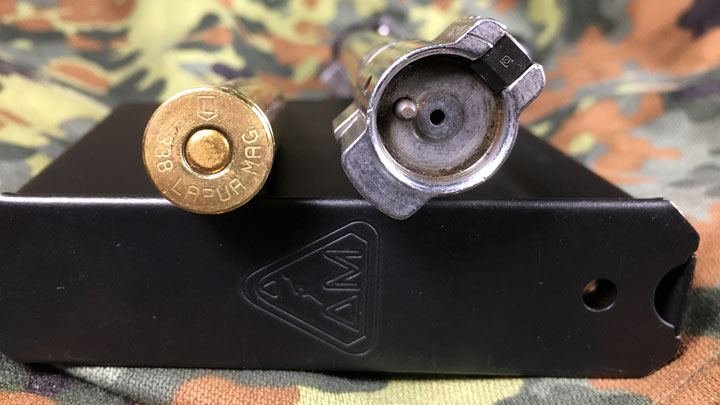
But don’t fall victim to the mindset that it’s a long-range-only round; in actuality, it’s equally at home when hunting at close to medium range. In fact, wherever you’d use a .338 Win. Mag., .340 Wby. Mag., or .338 RUM, it’d do as well, if not better. This is certainly evident in Europe.
Geoff Esterline, marketing director for Capstone Precision Group, LLC., passed along the following from his Finnish counterpart. “Here in Finland, also in Sweden, .338 Lapua Magnum is used when hunting the moose from the fields and in Norway they use that caliber on their mountain hunting,” he wrote. “Mainly because of Blaser and Steyr .338 Lapua Mag. has taken some place among the Central-European hunters. There are huge fields like puszta in Hungary where they use that caliber for wild boars and red stags. Also, it is used on [the] Alps where the shooting distances are relatively long.” Given its success in Europe, it’d be equally at home on most big-game species in the U.S.

Ammunition
Given the .338 Lapua Magnum’s substantial velocities, bullet selection is critical. Unless minimal retained weight is desired, a premium, controlled-expansion bullet, such as the Lapua Naturalis, Hornady GMX, Barnes TSX and TTSX, Nosler Partition or AccuBond, Swift A-Frame or Woodleigh Weldcore, is essential at close range for the largest species. With an increase in distance there is less necessity for stout construction; in fact, quite the opposite is often preferable. Berger’s Elite Hunter bullets pair top-tier accuracy and reliable expansion at greater distances.
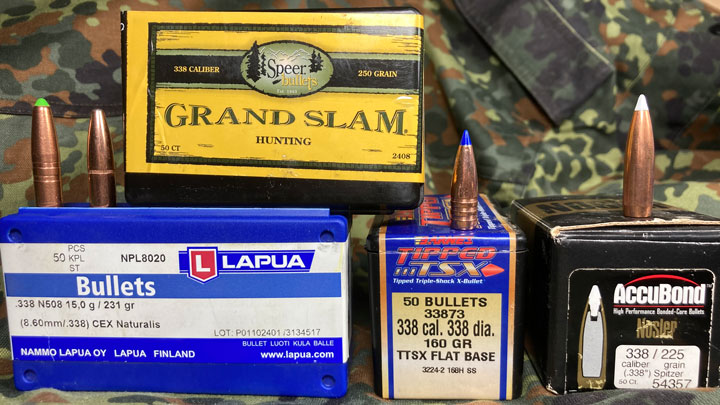
Many of the abovementioned bullets cannot be had in factory .338 Lapua Magnum loads, so they’re handloading only propositions. By handloading, though, you’ll have access to a wide selection of .33-caliber bullets. And most .338 Lapua Magnum-chambered rifles can utilize the heaviest of them. Just keep in mind that not all 0.338-inch-diameter bullets are good choices for the Lapua for the previously mentioned reasons.
As for factory loads, most manufacturers load match-grade target bullets; this makes sense as the cartridge is most frequently used for engaging static, long-range targets, not hunting. Still, there are enough options from Berger, Lapua, Federal, Nosler, Hornady and Barnes to satiate most hunters. Just be prepared to pay a premium for them. In the current (and unpredictable) marketplace, it’s not uncommon for the ammunition to range from $5.00 to $12.00 per round. Performance comes at a price.
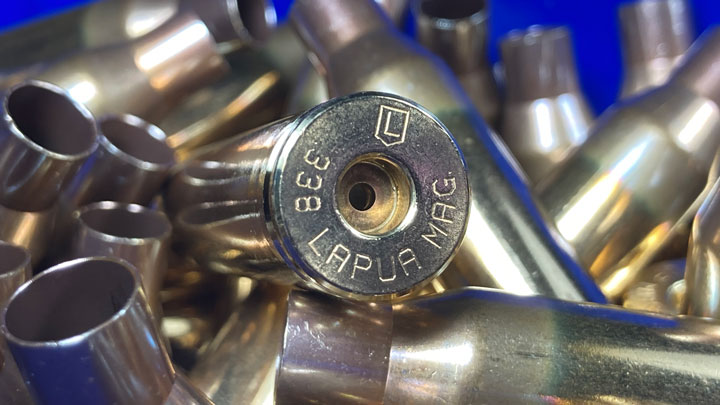
Should you go the handloading route, which I suggest, brass can be had from Lapua (naturally), Hornady and Nosler. When properly cared for, the brass, which costs around $4 each, will last through many firing-and-loading cycles. I opt for Lapua brass due to its absolute consistency and demonstrated longevity.
Of course, achieving top velocities from that cartridge’s cavernous case—in excess of 100 grains of water—requires large charges of extra-slow-burning propellant. Among the best are: Vihtavuori N565, N570 and N170, Ramshot Magnum, Hodgdon H1000 and Retumbo, Reloder 33, and IMR 7977 and 8133, among others. Reliable ignition requires a large rifle magnum primer. For me the Federal 215 is the go-to.
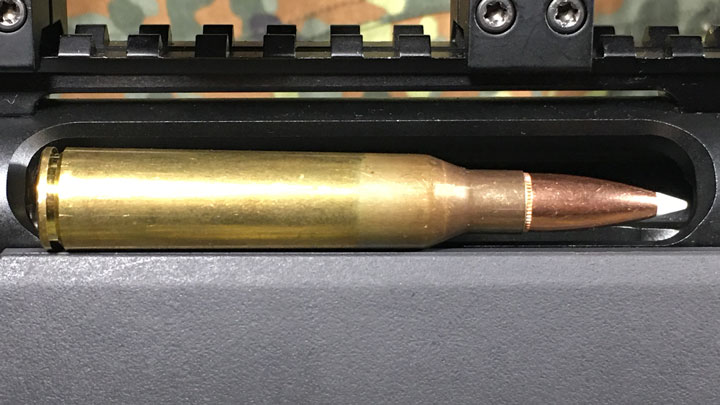
Firearms
Perhaps the greatest impediment to the .338 Lapua Magnum’s popularity is perception, or more appropriately, misperception. Sure, the cartridge requires a large, magnum action, preventing many existing models from housing it, but where it is chambered, it’s almost always in a heavyweight rifle fitted with an extra-long barrel. Why? It’s considered a long-range round. Again, it’s a perception problem. Sure, that lengthy barrel will help achieve a better propellant burn; however, it also makes said rifles unwieldly when navigating dense brush, hunting from a stand or blind, etc. A quality brake is beneficial for recoil reduction, but it will increase the rifle’s report.

Fortunately, there are a few good candidates for hunters who want an all-around rifle in the caliber. Among the best, and my personal choice, is Savage’s Model 110 Long Range Hunter. Despite its moniker, the rifle, which has a 26-inch barrel fitted with a brake, detachable-box magazine and AccuStock rail system, weighs a tolerable 8.85 pounds. That’s only the beginning of its endearing features, and it’s affordable. Other options can be found in Weatherby’s Mark V Accumark series, as well as the Steyr Carbon CL II, Blaser R8 and Sako 85 Long Range. These models are well-suited for hunting both near and far. Immediately noticeable is that many of these options are from European rifle makers—yet more proof that the cartridge is viewed as more than a long-range-only affair.

In most instances, rifles chambered in .338 Lapua Magnum—but not dedicated that cartridge—will carry a premium due to their low demand and/or increased action size, which is needed to house the hulking cartridge with a 3.681-inch SAAMI maximum cartridge overall length. The extra cost is well worth the price.

So often in life products serve dual purposes. This is especially true in firearms and cartridges, and the .338 Lapua Magnum is a prime example. Though developed for the military and engaging targets at great distances, where it has certainly excelled, it’s equally suited for hunting big game at any sane range.












